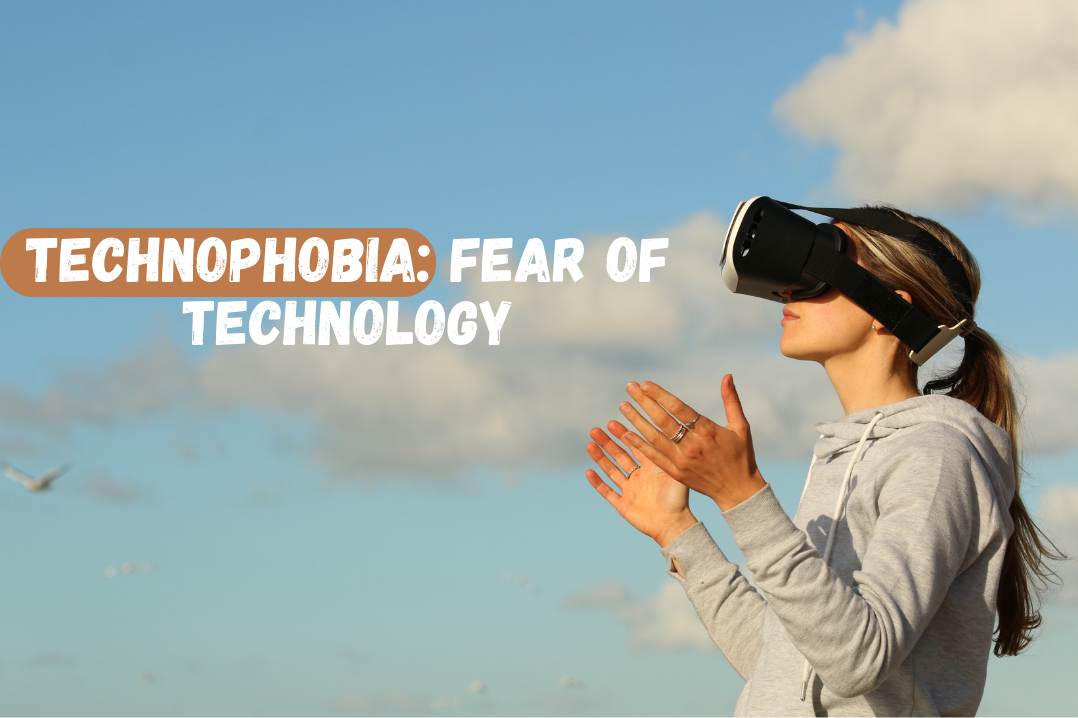
Technophobia, defined as an irrational fear of technology, encompasses a pervasive dread of computers, artificial intelligence (A.I.), and advanced hardware or software. It should be distinguished from mechanophobia, which is a more specific fear limited to machines.
In severe cases, individuals grappling with technophobia may encounter debilitating panic attacks, potentially leading to hospitalization. These episodes often manifest in symptoms like increased heart rate, rapid breathing, excessive perspiration, tremors, and muscle tension.
Given the relentless advancement of the tech industry in the 21st century, technophobia presents significant challenges. Avoidance is a common coping mechanism for phobias, but in this digital age, steering clear of technology is becoming increasingly impractical, as it pervades nearly every facet of global culture.
While some technophobic individuals may contemplate relocating to remote, technology-scarce areas, this decision, while seemingly productive, can have adverse consequences. By actively evading their fear of technology, they inadvertently reinforce it.
It is essential for individuals battling technophobia to seek help and support in confronting their fears, as embracing technology is crucial in today’s interconnected world.
What is Technophobia?
Technophobia is the irrational fear or aversion to technology. It can manifest in various ways, from anxiety about using electronic devices to the avoidance of certain technological tasks. This phobia can hinder personal and professional growth and prevent individuals from reaping the benefits of the digital age.
The Causes of Technophobia

Lack of Familiarity
A significant factor that breeds technophobia is the lack of familiarity with technology. For those who didn’t come of age in the era of advanced technology, the digital world can appear daunting and enigmatic. They may perceive it as an intricate labyrinth of complex devices, software, and digital jargon, leading to an overwhelming fear of the unknown.
Fear of Change
Resistance to change is yet another influential driver of technophobia. Human beings, by nature, tend to cling to the comfort of the familiar. The swift and ceaseless evolution of technology can be disconcerting for many, as it necessitates stepping out of one’s comfort zone. This fear of change is a barrier to embracing technology and adapting to the digital era.
Negative Experiences
Past negative encounters in the digital realm can inflict lasting scars, resulting in an enduring dread of technology. Incidents such as cyberbullying, identity theft, or malware infections can leave deep emotional imprints. These traumatic experiences serve as poignant reminders of the potential dangers and vulnerabilities inherent in the digital landscape, thereby nurturing technophobia.
Information Overload
In our modern world, the incessant deluge of information through digital channels has reached unprecedented levels. The overwhelming volume of data can inundate and paralyze individuals, creating a profound sense of apprehension. The fear of technology intensifies as the vast digital sea of information feels impossible to navigate, leaving individuals anxious about drowning in the endless tide of data.
Symptoms of Technophobia

The hallmark symptom of technophobia is anxiety, which permeates the daily lives of those afflicted by this fear. They find themselves in a perpetual state of apprehension when confronted with technology. In some instances, the anxiety can escalate to the point where they experience full-blown panic attacks, although such episodes do not occur with every instance of technophobia-induced anxiety. Nevertheless, panic attacks are a common occurrence among individuals grappling with various phobias.
It’s crucial to acknowledge that the term “technology” is inherently broad, encompassing the application of scientific knowledge for practical purposes, particularly in industry. This broad definition implies that virtually anything can be considered technology, ranging from sophisticated servers supporting global businesses to basic tools like pencils used by young children to learn to write their names. Consequently, technophobia can manifest in a spectrum of symptoms, depending on the specific fears of the individual.
Additionally, a person’s genetic predisposition plays a role, and some individuals with technophobia may also develop co-existing anxiety disorders, such as Generalized Anxiety Disorder (GAD) or Obsessive-Compulsive Disorder (OCD). However, the likelihood of such co-occurrence varies greatly from one person to another.
Here are some of the more common symptoms associated with technophobia:
- Anxiety when thinking of technology: The mere thought of technology can trigger a sense of unease and anxiety in individuals with technophobia.
- Anxiety when seeing technology: When confronted with technological devices or equipment, technophobes often experience heightened anxiety.
- Inability to cope with their anxiety: Managing and coping with their anxiety in the face of technology proves to be a significant challenge for those with technophobia.
- Muscle tension, shakiness, and sweating: Physical manifestations of anxiety, such as muscle tension, tremors, and excessive perspiration, are common symptoms of technophobia.
- May experience panic attacks: In more severe cases, technophobia can lead to panic attacks, characterized by rapid heart rate, shortness of breath, and intense fear, among other symptoms.
Overcoming Technophobia

Exposure therapy can effectively alleviate symptoms of technophobia by gradually exposing patients to their feared technology. While this process may induce anxiety, it ultimately desensitizes individuals to their fear. However, the careful guidance of an experienced therapist is crucial to prevent overwhelming the patient.
Anti-anxiety medication may reduce technophobia symptoms, but it should be discussed with a healthcare professional. It’s important to note that medication alone does not equip patients with the coping skills needed for long-term treatment; therapy is often necessary.
Cognitive Behavioral Therapy (CBT) for Technophobia
Cognitive Behavioral Therapy, commonly known as CBT, is a psycho-social intervention that stands as a beacon of hope for individuals seeking to improve their mental health. While it is widely recognized for its efficacy in treating anxiety disorders such as Generalized Anxiety Disorder (GAD) and Obsessive-Compulsive Disorder (OCD), it also holds the potential to bring relief to those grappling with technophobia.
For individuals with technophobia, CBT serves as a valuable tool, offering them a deeper understanding of the underlying thought patterns and behaviors associated with their irrational fears. This insight can be transformative, as it allows individuals to demystify and confront their technophobia in a structured and therapeutic manner.
CBT’s effectiveness in addressing technophobia lies in its ability to address the automaticity of symptoms. When someone with technophobia encounters their fear, an instantaneous and subconscious reaction often takes hold. This lack of introspection can exacerbate the condition, intensifying the individual’s suffering. CBT, however, equips individuals with the tools to step back and analyze their fears more comprehensively than they typically would.
Engaging in CBT for technophobia offers several benefits, including:
1. Understanding Specific Fears: CBT fosters a heightened sense of introspection, encouraging individuals to delve deeper into the specifics of their technophobia. This greater understanding is a pivotal step in the journey towards conquering irrational fears.
2. Learning Coping Skills: CBT equips individuals with a range of coping skills aimed at mitigating the anxiety induced by their technophobia. By learning how to manage their emotional responses and employ constructive coping mechanisms, individuals can regain a sense of control over their lives.
3. Challenging Negative Thought Patterns: One of CBT’s core tenets is challenging and reshaping negative thought patterns. Through guided therapy, individuals can learn to identify and reframe these thoughts, reducing the power of their technophobia over time.
In essence, CBT provides a structured and evidence-based approach to addressing technophobia. By confronting this fear with the guidance of a skilled therapist, individuals can develop a healthier relationship with technology, ultimately leading to improved mental health and a higher quality of life.
Mindfulness-Based Stress Reduction (MBSR) for Technophobia
MBSR, an 8-week, evidence-based program, offers intensive mindfulness training that transcends religious or spiritual affiliations. It has proven highly effective in alleviating anxiety, stress, depression, and various forms of mental distress. Technophobia sufferers can greatly benefit from MBSR, as mindfulness meditation, a central component of this structured program, has demonstrated its efficacy in reducing anxiety and fostering emotional well-being.
Within the framework of MBSR, individuals with technophobia can anticipate acquiring an array of invaluable skills. These skills are designed to help them mitigate the intense anxiety associated with their specific phobia. The program incorporates guided meditation, body scan exercises, and cognitive techniques that encourage awareness and the cultivation of mindfulness.
It’s essential for individuals grappling with technophobia to consult with their doctor or therapist regarding the potential inclusion of MBSR in their treatment plan. They can also seek guidance on finding MBSR programs available in their locality.
Meditation for Technophobia
Meditation, particularly mindfulness meditation, holds promise for individuals afflicted by technophobia. This practice can guide them toward a more balanced and equanimous state of mind. Mindfulness meditation offers various approaches, and it’s remarkably accessible, with meditation apps designed to facilitate the process.
Mindfulness meditation has the potential to alleviate technophobia by redirecting one’s focus away from fear and onto a neutral focal point, such as the breath. During a panic attack, shifting attention to the physical sensations experienced while breathing can help reduce the intensity of anxiety.
To employ mindfulness meditation for symptom relief in technophobia, individuals can engage in the following practices:
- Focus on the contraction and relaxation of abdominal and chest muscles with each breath.
- Delve into the sensation of the chest expanding during inhalation and contracting during exhalation.
- Engage with the surrounding sounds, the tactile sensations of objects, the taste of food, and the aroma of scents.
Education and Familiarization
Encouraging individuals to take technology courses and immerse themselves in the digital realm is a pivotal step. Education not only demystifies the technology but also equips individuals with the knowledge and skills needed to navigate the digital landscape confidently. By understanding the technology’s fundamental principles, individuals can overcome the fear of the unknown and approach it with greater assurance.
Gradual Exposure
Taking a gradual exposure approach can be highly effective in acclimating individuals to technology. It involves introducing them to technology in a systematic, step-by-step manner, starting with simple and non-intimidating tasks. As they build familiarity and confidence, more complex technological aspects can be introduced. This incremental approach allows individuals to confront their fear of technology at a manageable pace, reducing the overwhelming feeling often associated with it.
Seek Professional Help
In cases of severe technophobia where the fear significantly impairs an individual’s daily life and well-being, it is prudent to seek the guidance of a mental health professional or therapist. These experts are equipped to provide the necessary support and therapeutic interventions to address the root causes of technophobia. Through counseling, cognitive-behavioral therapy, or exposure therapy, individuals can work towards overcoming their fear and anxiety associated with technology.
Exposure Therapy for Technophobia
As previously discussed, exposure therapy remains a prominent approach in the treatment of anxiety disorders, including technophobia. It proves to be a valuable tool in desensitizing individuals to their specific fears. However, the effectiveness of exposure therapy hinges on the expertise of the therapist conducting it. Striking the right balance is paramount: insufficient exposure may yield limited results, while excessive exposure can potentially exacerbate the condition.
An adept therapist must assess the severity of the patient’s technophobia to determine the appropriate level of exposure that the patient can manage effectively. This assessment ensures that the therapy promotes gradual, yet meaningful, progress.
Exercise for Technophobia
Exercise, particularly cardiovascular exercise, emerges as a powerful ally in alleviating anxiety disorders like technophobia. Aerobic activities have been shown to significantly reduce stress and anxiety. The American Psychological Association notes that exercise conditions the mind to better cope with stress, reflecting the physical stress the body endures during strenuous workouts.
According to the American Psychological Association, exercise conditions the mind to better cope with stressful situations, a concept that aligns with the physical stress the body undergoes during strenuous exercise. Engaging in regular aerobic exercise can make it easier to manage the anxiety and stress associated with technophobia, providing relief over time.
There are numerous aerobic activities to choose from, such as swimming, biking, skiing, walking, jogging, and participating in sports like tennis, soccer, basketball, or racquetball. Consistent exercise can significantly alleviate the distress associated with technophobia while offering additional benefits, including improved physical fitness and overall well-being.
Yoga for Technophobia
Yoga offers a multitude of poses and techniques that can be particularly advantageous for individuals dealing with technophobia. This is in part due to the meditative state of mind that yoga cultivates. Yoga can be described as meditation in motion, redirecting one’s focus to more constructive thoughts and sensations.
Various forms of yoga, such as Hatha or hot yoga, can help reduce the stress and anxiety associated with technophobia. These practices foster a sense of calm and mindfulness that contributes to symptom relief.
Embracing the Digital Age
In the contemporary world, technology plays an indispensable role in our daily lives. Overcoming technophobia is not merely a choice but a necessity for personal growth and professional success. By comprehending the root causes of this fear and effectively employing strategies to conquer it, individuals can confidently welcome the digital age, enhancing their overall quality of life.
In an era marked by unprecedented technological advancements, being adept at using digital tools and platforms is no longer an optional skill but a fundamental requirement. From online communication to remote work, education, and accessing essential services, technology has become the linchpin of modern society.
By addressing and conquering technophobia, individuals can unlock a myriad of opportunities:
- Professional Advancement: In the professional sphere, technology is a driving force behind innovation and efficiency. Those who embrace it have a competitive edge, with the potential for career growth and success.
- Enhanced Social Connectivity: Technology facilitates seamless communication and connection with friends, family, and colleagues, bridging geographical distances and fostering meaningful relationships.
- Access to Information: The digital age offers an abundance of knowledge at one’s fingertips. Individuals who overcome technophobia can tap into this vast reservoir of information for personal development and problem-solving.
- Improved Quality of Life: Embracing technology allows individuals to access vital services, from healthcare to banking, making daily life more convenient and efficient.
To embrace the digital age confidently, it is imperative to confront and overcome technophobia. Understanding the causes of this fear, whether rooted in a lack of familiarity, fear of change, negative experiences, or information overload, is the first step. Subsequently, implementing strategies such as education, gradual exposure, and professional assistance can empower individuals to navigate the digital landscape with ease.
Reducing Caffeine Intake for Technophobia
The connection between caffeine and anxiety is well-established. High caffeine consumption can significantly contribute to increased anxiety levels, a consequence of how caffeine affects the body’s physiological responses. When we consume large doses of caffeine, our heart rate accelerates, and tension mounts, essentially triggering a “fight or flight” response. For individuals with technophobia, this heightened state of alertness can act as a trigger for panic attacks.
Consequently, minimizing caffeine intake, or even eliminating it from your daily routine, can have a substantial impact on reducing day-to-day anxiety. While it may not completely eradicate anxiety, it can certainly alleviate unnecessary distress that might have arisen due to excessive caffeine consumption.
Common sources of caffeine include beverages like coffee, tea, and certain energy drinks, as well as foods like dark chocolate. Increasing awareness of your daily caffeine intake can be a significant step in mitigating the symptoms associated with technophobia and improving your overall well-being.
Conclusion
Technophobia is a genuine concern that affects many individuals. We, as experts in the field, have provided a comprehensive guide to understanding and overcoming this fear. By addressing the causes, consequences, and solutions related to technophobia, we aim to empower individuals to embrace technology confidently and lead fulfilling lives in the digital age.
Reference
- Brosnan, M. J. (2002). Technophobia: The psychological impact of information technology. Routledge.
FAQs
1. What is technophobia, and how does it manifest?
- Technophobia is the irrational fear of technology, which can encompass various aspects of modern technology, from computers to smartphones. It manifests as anxiety, panic attacks, and an aversion to technology-related situations.
2. Can technophobia be effectively treated?
- Yes, technophobia can be treated. Various therapeutic approaches, including exposure therapy, cognitive-behavioral therapy, and mindfulness-based stress reduction, can help individuals manage and overcome their technophobia.
3. How does caffeine affect technophobia?
- Caffeine consumption can exacerbate anxiety, making it particularly problematic for individuals with technophobia. High caffeine intake can lead to increased heart rate and tension, potentially triggering panic attacks.
4. Is it necessary to completely eliminate caffeine for managing technophobia?
- While reducing or eliminating caffeine from your daily routine can significantly alleviate anxiety, it may not be essential to eliminate it entirely. Moderation and awareness of caffeine intake are key to managing its impact on technophobia.
5. What other lifestyle changes can help with technophobia?
- Engaging in regular aerobic exercise and mindfulness practices like yoga can also aid in reducing anxiety associated with technophobia. These activities promote stress reduction and overall well-being.
6. Can I manage technophobia on my own, or should I seek professional help?
- While some self-help strategies can be beneficial, it’s often advisable to seek professional assistance, particularly if technophobia significantly impairs your daily life. Therapists and mental health professionals can provide tailored treatments and support to address technophobia effectively.
